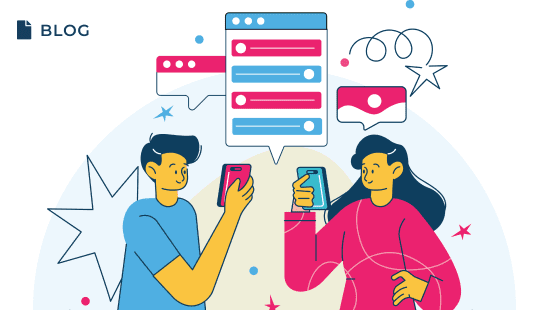Well defined customer touch points are the foundation of a strong digital experience with your product. And as the SaaS industry evolves and gets more sophisticated, so do customer and user journeys along these touch points.
Let’s start with the basics. What’s the difference between a customer journey and a user journey? The terms ‘customer’ and ‘user’ are sometimes used interchangeably—but each has a distinct set of priorities and needs when it comes to their digital experience with your business and product. And, most importantly, product teams need to address both journeys with their in-app and digital product experiences to drive adoption and retention.
Customer journeys encompass everything with an overall account. For example, are they new to your product and still need to implement product tags or integrations to complete setup? Has the previous customer admin for your product found a new role and a new admin needs training? These milestones and lifecycle events are critical to address via your in-app programs and should be a key part of your customer journeys.
Unlike the customer journey, user journeys address the specific needs of an individual user of your product. While customers, or accounts, have a few significant lifecycle moments, users vary greatly in terms of specific user types, product needs, and daily usage. User journeys can include granular mapping to key features, re-engagement if users go dark in your product, and outreach such as 1:many webinars or feature release notifications.
The Role of Product Experience
So, how should your product experience address both of these journeys when it comes to in-app programs, and how do you make these journeys cohesive? A few key learnings from our customers are:
- Curate specific onboarding for new customers vs. new users. While some onboarding guides or programs are likely applicable to all new users, some may only be relevant for customers who are completing the initial setup. Make sure to trigger content based on feature activation and usage to avoid pushing customers to set up functionality that may already be working for them.
- Surface customer ROI to decision makers even if they aren’t active in the product. Some products may have an executive sponsor or key stakeholder that doesn’t use your product on a regular basis. If you are only showcasing the impact your product has to in-app users, you may be missing out on showing your overall customer what you are capable of. Consider emails to these types of users to ensure the overall customer gets regular updates on the impact your product has.
- Use customer health as a way to segment outreach. When your customer is at risk for churn, an in-app engagement to upsell a new feature may not make sense. Target customers by health score (for example, ensuring all customers must be above a specific threshold to receive in-app guides) to fine-tune digital user journeys that incorporate overall customer needs.
- Trigger or throttle user journeys based on key customer milestones. Like customer health can indicate if in-app outreach makes sense, specific customer lifecycle moments may warrant more or less in-app content. Depending on your product, promote in-app “how-to” content to nudge a customer just prior to renewal to explore a new use case, or throttle (limit) content for new customers who are still onboarding to narrow their focus on key features as they’re getting started. Ensure that your in-app user content aligns with the overall customer journey stage for best success.
Both user and customer journeys are key to address via digital programs, and where these journeys intersect is where customers can see exponential value. How do you quadruple your impact? Align these journeys across all teams—Customer Success, Product, Operations— to drive one cohesive journey via both human and digital outreach to see customer experiences take off.
Now that you have a clear understanding of customer and digital user journeys, let’s get started!


